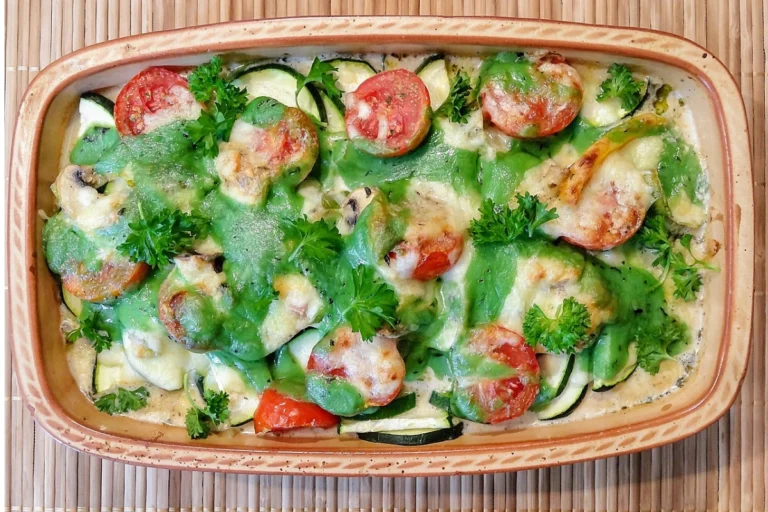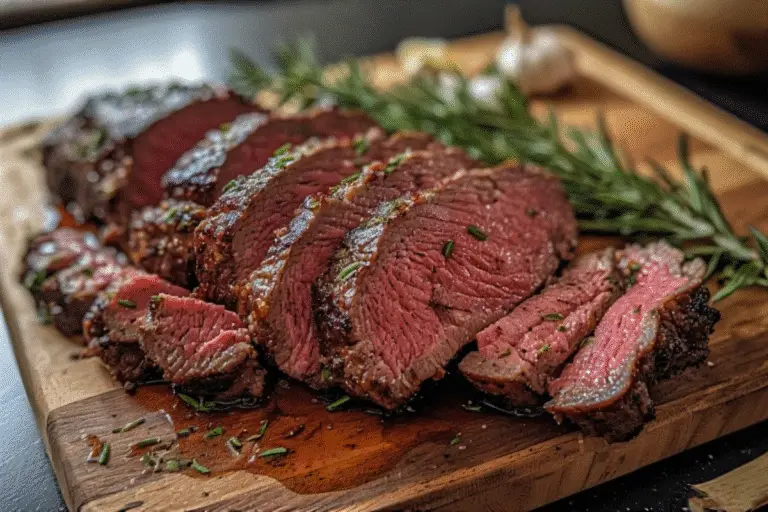Top Buttercup Squash Recipes You’ll Love to Try
There’s something truly comforting about cozying up in your kitchen and creating dishes that warm both your body and soul. If you’ve ever stumbled upon buttercup squash at your local market but weren’t quite sure how to unlock its full potential, you’re in the right place. These buttercup squash recipes will not only introduce you to this underrated winter vegetable but also help you master the art of cooking it in ways that bring out its natural sweetness, creaminess, and hearty flavor.
Whether you’re a seasoned home cook or someone eager to try seasonal ingredients, these recipes are crafted to fit your lifestyle, excite your taste buds, and make your meals memorable. So, let’s dive in and discover how to turn buttercup squash into your new kitchen favorite.
🗂️ Post Navigation
ToggleWhat Is Buttercup Squash? A Quick Introduction
If you’re not yet familiar with buttercup squash, you’re missing out on a culinary gem. This winter squash boasts a unique, almost creamy texture inside a tough, dark green shell with a characteristic “turban” top. Its flavor is subtly sweet and nutty, making it incredibly versatile across a range of dishes.
Buttercup Squash Nutritional Benefits
Eating buttercup squash is a win for both flavor and health. Packed with vitamins A and C, it supports your immune system and promotes healthy skin. The fiber content aids digestion and keeps you feeling full longer, which is great if you’re watching your diet. Plus, antioxidants in this squash help combat inflammation and may reduce the risk of chronic illnesses.
For detailed nutritional facts, consider checking reputable sources such as the USDA FoodData Central, which provides comprehensive data on the health benefits of buttercup squash.
How to Select and Store Buttercup Squash
When you’re shopping for buttercup squash, look for ones that feel heavy for their size with a hard, unblemished rind. Avoid squash with soft spots or cracks, as these indicate spoilage. At home, store your buttercup squash in a cool, dark place with good ventilation. Under ideal conditions, it can last several weeks, allowing you to plan your meals around it.
Preparing Buttercup Squash for Cooking
Before you dive into your buttercup squash recipes, you’ll want to prep it correctly. It might seem intimidating to handle such a tough-skinned vegetable, but with the right technique, it’s simpler than you think.
Step-by-Step Guide to Peeling, Cutting, and Roasting
Wash thoroughly: Rinse your squash under cold water to remove any dirt.
Cut carefully: Use a sturdy chef’s knife to slice off both ends. Then, cut the squash in half across the middle.
Scoop out seeds: Use a spoon to remove the seeds and fibrous strings. You can roast the seeds later for a snack.
Peel the skin: The skin is edible but tough. For recipes requiring peeled squash, use a sharp vegetable peeler or carefully slice the skin off with a knife.
Cut as needed: Depending on your recipe, dice, slice, or leave in halves for roasting.
Buttercup Squash Cooking Times & Techniques
Different cooking methods bring out different qualities in buttercup squash. Here’s a quick reference table to help you decide which method suits your recipe and schedule:
| Cooking Method | Temperature/Time | Notes |
|---|---|---|
| Roasting | 400°F for 25-30 minutes | Enhances sweetness and texture |
| Boiling | 15-20 minutes | Softens for mashing or purees |
| Steaming | 15 minutes | Retains nutrients and flavor |
| Microwaving | 8-10 minutes | Quick, convenient option |
By knowing these basics, you’ll avoid overcooking or undercooking and get the best results every time.
Top Buttercup Squash Recipes You’ll Love to Try
Ready to get cooking? Here are some of the most delicious and easy-to-follow buttercup squash recipes that are perfect for any occasion.
1. Classic Roasted Buttercup Squash
This is a foolproof recipe that highlights the natural sweetness of the squash. It’s perfect as a side or tossed into salads.
| Ingredient | Quantity |
|---|---|
| Buttercup squash | 1 large, peeled and diced |
| Onion | 1 medium, chopped |
| Garlic cloves | 3, minced |
| Coconut milk | 1 can (13.5 oz) |
| Vegetable broth | 3 cups |
| Olive oil | 2 tbsp |
| Salt & pepper | To taste |
| Curry powder (optional) | 1 tsp |
Instructions:
Preheat your oven to 400°F (200°C).
Peel and cube the squash into 1-inch pieces.
Toss the cubes with olive oil, salt, pepper, and thyme if using.
Spread evenly on a baking sheet.
Roast for 25-30 minutes, flipping halfway, until tender and caramelized.
This simple recipe lets you enjoy the squash’s true flavor, but you can also sprinkle with Parmesan or drizzle with balsamic glaze for an extra touch.
2. Buttercup Squash Soup with Coconut Milk
Warm, creamy, and dairy-free, this soup is both comforting and vibrant.
| Ingredient | Quantity |
|---|---|
| Buttercup squash | 1 large, peeled and diced |
| Onion | 1 medium, chopped |
| Garlic cloves | 3, minced |
| Coconut milk | 1 can (13.5 oz) |
| Vegetable broth | 3 cups |
| Olive oil | 2 tbsp |
| Salt & pepper | To taste |
| Curry powder (optional) | 1 tsp |
Instructions:
In a large pot, heat olive oil and sauté onion and garlic until soft.
Add diced squash and curry powder; cook for 5 minutes.
Pour in vegetable broth and bring to a boil. Reduce heat and simmer until squash is tender (about 20 minutes).
Puree the soup using an immersion blender or blender until smooth.
Stir in coconut milk, season with salt and pepper, and warm through.
Garnish with toasted pumpkin seeds or fresh cilantro to add texture and freshness.
3. Stuffed Buttercup Squash with Quinoa and Veggies
This recipe turns your squash into a hearty meal perfect for vegetarians or anyone craving a wholesome dish.
| Ingredient | Quantity |
|---|---|
| Buttercup squash | 2 medium halves |
| Quinoa | 1 cup cooked |
| Bell peppers | 1 cup diced |
| Spinach | 1 cup chopped |
| Onion | 1 small, chopped |
| Olive oil | 2 tbsp |
| Garlic | 2 cloves, minced |
| Feta cheese (optional) | 1/2 cup crumbled |
| Salt & pepper | To taste |
Instructions:
Roast the squash halves at 375°F (190°C) for 30 minutes or until tender.
Meanwhile, sauté onion, garlic, bell peppers, and spinach in olive oil.
Mix the veggies with cooked quinoa and season with salt and pepper.
Stuff the roasted squash halves with the quinoa mixture and sprinkle with feta if desired.
Return to oven for 10 minutes to meld flavors.
This colorful recipe packs protein, fiber, and flavor into a stunning presentation.
4. Buttercup Squash Mash with Garlic and Parmesan
A delicious alternative to traditional mashed potatoes, this recipe is creamy and slightly sweet.
| Ingredient | Quantity |
|---|---|
| Buttercup squash | 2 lbs, peeled and diced |
| Garlic | 3 cloves |
| Parmesan cheese | 1/2 cup grated |
| Butter or olive oil | 2 tbsp |
| Salt & pepper | To taste |
Instructions:
Boil diced squash and garlic cloves until soft, about 20 minutes.
Drain and mash with butter or olive oil.
Stir in Parmesan cheese, salt, and pepper until smooth and creamy.
Serve alongside roasted meats or as a vegetarian main with sautéed greens.
5. Buttercup Squash Curry — A Flavorful Vegan Delight
This vibrant curry is full of spices and rich flavor, perfect for a cozy dinner.
| Ingredient | Quantity |
|---|---|
| Buttercup squash | 1 medium, cubed |
| Coconut milk | 1 can |
| Onion | 1 medium, chopped |
| Garlic | 3 cloves, minced |
| Ginger | 1-inch piece, grated |
| Curry powder | 2 tsp |
| Tomatoes (canned) | 1 cup |
| Spinach or kale | 2 cups |
| Olive oil | 2 tbsp |
| Salt & pepper | To taste |
Instructions:
Sauté onion, garlic, and ginger in olive oil until fragrant.
Add curry powder and cook for another minute.
Stir in tomatoes, squash cubes, and coconut milk. Simmer until squash is tender (20-25 minutes).
Add spinach or kale and cook until wilted.
Season with salt and pepper to taste.
Serve with basmati rice or warm naan bread for a filling meal.
Tips and Tricks for Making the Best Buttercup Squash Recipes
Diet-Friendly Adjustments: Buttercup squash recipes naturally fit into vegan and gluten-free diets. To make them keto-friendly, reduce higher-carb ingredients like quinoa or beans.
Storing Leftovers: Cooked buttercup squash dishes keep well in airtight containers for 3-4 days in the fridge. Reheat gently to preserve texture.
Pairing Suggestions: Buttercup squash pairs beautifully with herbs like sage, thyme, and rosemary, as well as proteins like chicken, pork, or beans.
Frequently Asked Questions About Buttercup Squash Recipes
What makes buttercup squash different from other winter squashes?
Buttercup squash stands out due to its creamy, dense flesh and sweet, nutty flavor, unlike the wetter texture of butternut squash or the starchier feel of acorn squash.
Can I substitute buttercup squash in any recipe?
Yes, you can often substitute buttercup squash for other winter squashes like butternut or acorn in most recipes, but cooking times and moisture content may vary slightly.
How do I store leftover cooked buttercup squash?
Store leftovers in an airtight container in the refrigerator for up to four days. You can also freeze purees or cooked cubes for longer storage.
Are buttercup squash recipes suitable for kids?
Absolutely! Buttercup squash is naturally sweet and mild, making it an excellent choice for picky eaters when prepared simply.
What are some quick buttercup squash recipes for busy weeknights?
Roasted buttercup squash cubes and buttercup squash soup can both be made in under 30 minutes, making them ideal for quick dinners.
Conclusion: Bring the Warmth of Buttercup Squash to Your Table
You’ve now got everything you need to turn buttercup squash from a curiosity into a staple in your cooking repertoire. These recipes not only highlight its rich, sweet flavor but also offer healthy, adaptable options to fit your tastes and lifestyle. Whether you’re roasting it, turning it into soup, or stuffing it with grains and veggies, buttercup squash brings comfort and creativity to your kitchen.
Why not try one of these recipes today? Your taste buds—and your family—will thank you. Don’t forget to bookmark this guide and share it with friends who love seasonal cooking. And if you’re eager for more recipes that celebrate wholesome ingredients, subscribe for regular inspiration delivered straight to your inbox.









